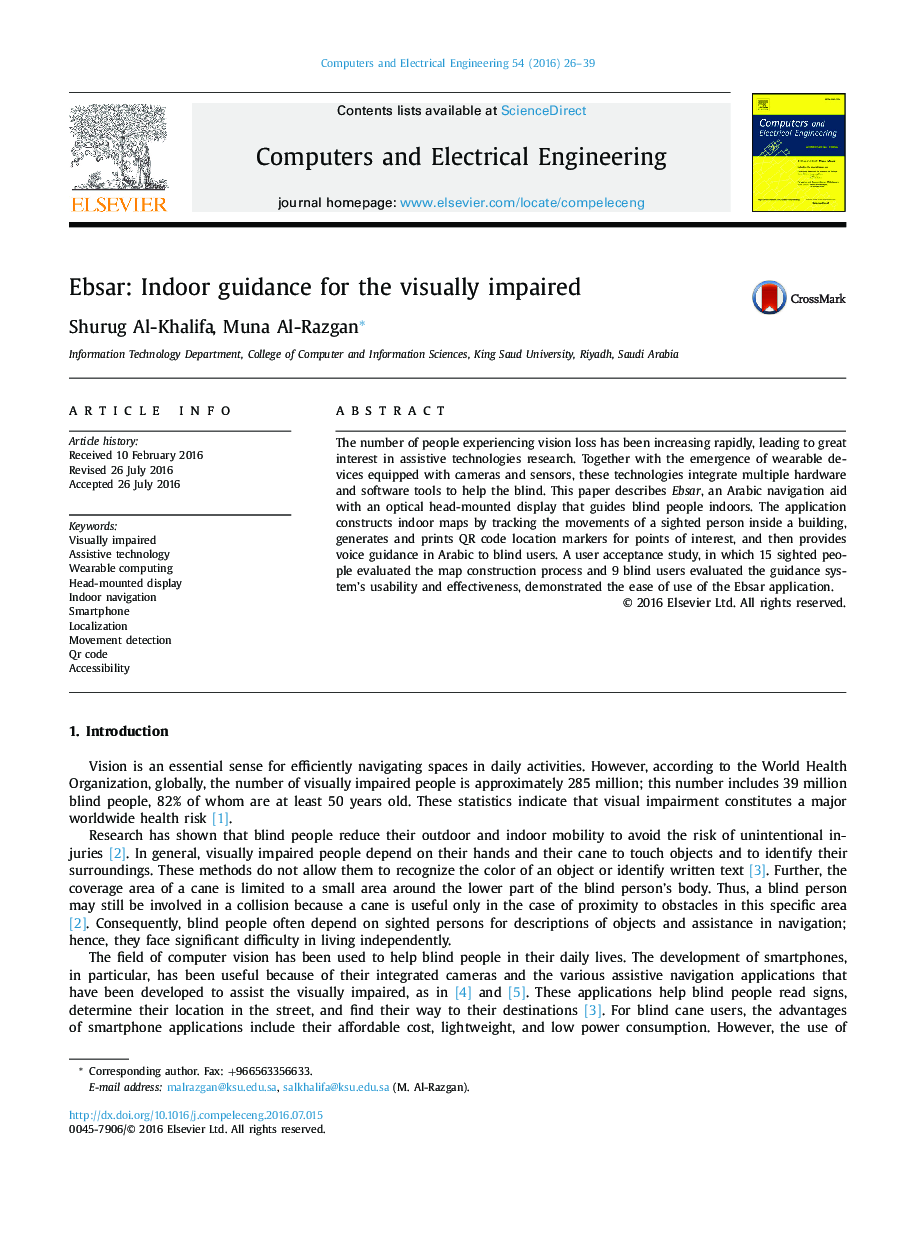| Article ID | Journal | Published Year | Pages | File Type |
|---|---|---|---|---|
| 454875 | Computers & Electrical Engineering | 2016 | 14 Pages |
•Ebsar uses Google Glass to guide vision-impaired Arabic speakers while indoors.•Maps are built through tracking a sighted person's movements through a space.•A system of camera-detectable location markers improves user guidance accuracy.•An Android application guides a vision-impaired user with the aid of Google Glass.
The number of people experiencing vision loss has been increasing rapidly, leading to great interest in assistive technologies research. Together with the emergence of wearable devices equipped with cameras and sensors, these technologies integrate multiple hardware and software tools to help the blind. This paper describes Ebsar, an Arabic navigation aid with an optical head-mounted display that guides blind people indoors. The application constructs indoor maps by tracking the movements of a sighted person inside a building, generates and prints QR code location markers for points of interest, and then provides voice guidance in Arabic to blind users. A user acceptance study, in which 15 sighted people evaluated the map construction process and 9 blind users evaluated the guidance system's usability and effectiveness, demonstrated the ease of use of the Ebsar application.
Graphical abstractFigure optionsDownload full-size imageDownload as PowerPoint slide
